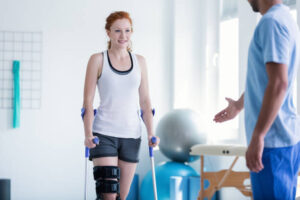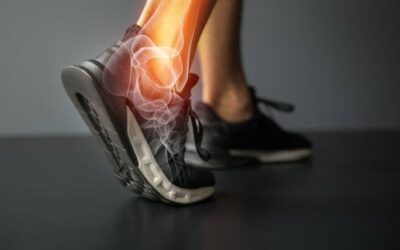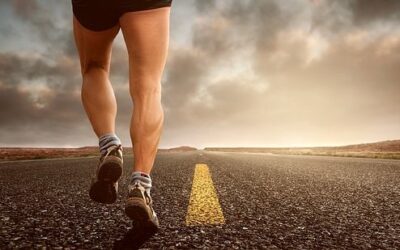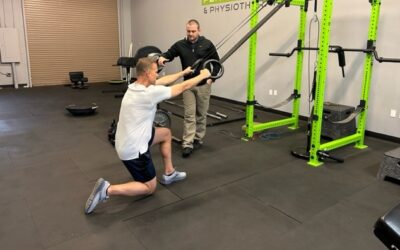The ACL recovery timeline can be one of the most varied, according to the research. Not only is there some debate in the research, but the general public also has a completely different timeline for recovery from an ACL surgery. There can be a big discrepancy between research and expectations in our community.
It can make the recovery timeline for an ACL surgery very confusing.
First, it is important to know that after a surgery, there is no discrete point where a joint is deemed as healed and everything is now “good to go”. This can vary significantly by individual.
Not everyone heals at the same rate. Not everyone has the same motion, strength, swelling, etc. going into the surgery. And not everyone has to return to the same level after surgery.
Keep in mind that being “healed” from an ACL surgery is used out of context. There is no returning to you “normal” after having such an invasive procedure. Rather, people should think of it as establishing a “new normal”. Once you go in and replace your original tissue, nothing is “normal” after that.
While it’s not the biggest aspect of recovery, an important part of it is understanding the pre-operative fitness levels and the post-operative goals.
The fitter you are, the easier the recovery. That is an easy one to understand.
Every individual has different post-operative goals as well. Are you looking to get back into playing tackle football on Sundays? Or are you just trying to keep up with your kids in your community? Each goal has its own challenges, but the one that requires the most demand from your body (tackle football on Sundays) will likely take longer to be ready for.
What Does it take to recover from an ACL Injury?
The reason for this article is to emphasize the most important aspect of your recovery… and that is that amount of EFFORT you put into the prehab (before a possible surgery) and the rehab (following the surgery, or recovery without surgery).
Did you know…
1 in 5 elite athletes never return to their professional level.
In athletes <25 years old, the rate of reinjury after an ACL reconstruction is 23%…
There are many factors that go into why athletes don’t return or have a high rate of re-tears. The three that come to mind are: the ability of the surgeon, the quality of the post-op rehab, and the level of social support that the injured person has.
But, the biggest controllable factor to increase the success rate of returning to sport after an ACL injury is the EFFORT put into the rehab process.
The EFFORT begins right after surgery. It is your dedication to improving your range of motion, decreasing the swelling, and beginning the isometric strengthening of the muscles in your legs. It is important for you to realize that no laser, needling technique, taping, suctioning, or any other passive intervention will give you greater benefits than what your body is already doing to help with your healing.

What should your rehab look like?
Most outpatient rehab will have you attending visits 2-3 times per week, but this does not help your overall body conditioning. Your EFFORT outside of the structured rehabilitation program will help recovery immensely.
You should be putting in the EFFORT during those sessions. It all starts with doing your research and making sure you pick the right physical therapist to get you back to where you want to be. Don’t be afraid to be selective. If you are laying on a table the whole session doing the same exercises as Betty and Ethel (who are not there to recover from an ACL repair), you may be in the wrong place.
Make the most of your time during your rehab sessions. Those sessions are fuel to continue and progress your recovery safely and should be geared towards giving you the confidence to continue moving.
During this time, you should be gradually exposed to more volume and intensity. All of this requires EFFORT to return to your future training demands. After all, the goal of the “new normal” is to return you to your sport at a higher level than before you injured your ACL.
During your rehab session, your provider should be making sure you are providing feedback and giving EFFORT during the session. Each exercise should have a purpose that contributes to the overall goal of progressively loading you. This prepares you for your return to you active life and/or sport.
Effort is a two way street in recovery from ACL injury.
A lot of this article has emphasized that the EFFORT is your responsibility as the patient… which is true. Your provider can give you all the education in the world, but you must take action on that education. If you give a half-ass effort to your recovery from ACL injuries, you will likely get half ass results.
However, not ALL of the EFFORT is on you. There is a small percentage that is left up to your providers.
It is their responsibility to put in the EFFORT to ensure they are providing you with the most sound advice and guidance to help you recover from such a traumatic injury. Since EFFORT is a two way street in ACL rehab, you need to confident in who you receive your care from.
If your provider spends more time working with patients who have Parkinson’s Disease, MS, or other neurological conditions than they do on orthopedic conditions, you may be in the wrong place. If they work with orthopedic conditions but haven’t treated an ACL injury in years, you also may be in the wrong place.
And, although the may say they want to treat you, they haven’t put in the EFFORT to ensure that they are up to date on the best protocols for treating the ACL injury. Some providers take this for granted.
Make sure you are confident in the EFFORT your provider is putting into YOUR rehab.
If you are struggling with an ACL injury, whether that be recovering from a surgery or avoiding a surgery, please reach out for a consultation here. We can help you develop a plan to get back to your active lifestyle!




